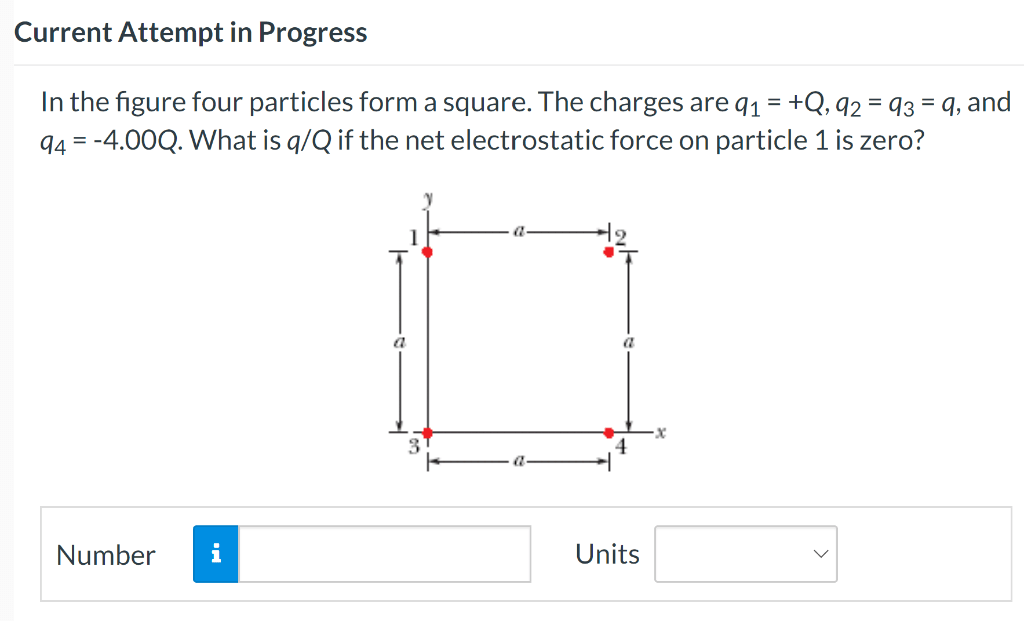In The Figure The Four Particles Form A Square
In The Figure The Four Particles Form A Square - What is q/q if the net electrostatic force on particle 1 is zero? What is the magnitude of the net electric field produced by the particles at the square's center? What is the magnitude of the net electric field produced by the particles at the square's center? This problem has been solved! 45 o − ( | q |) ( q) a 2) = | q | 2 4 π ε 0 a 2 ( 1 2 2 − q | q |) which (if we demand f 2 y = 0) leads q / q = 1 / 2 2. In the figure, four particles form a square.
This problem has been solved! You'll get a detailed solution from a subject matter expert that helps you learn core concepts. Learn the formula, units, and types of the electric field with examples. You'll get a detailed solution from a subject matter expert that helps you learn core concepts. What is the magnitude of the net electric.
In The Figure Four Particles Form A Square.
21 − 25, four particles form a square. 448 views 1 year ago physics examples. What is the magnitude of the net electric. F=8.99e9 nm^2/c^2 [abs (q1)abs (q2)]/r^2.
Is There Any Value Of Q That Makes The Net Electrostatic Force On Each Of The Four Particles Zero?
The charges are q1 = +q,q2 =q3 = q, q 1 = + q, q 2 = q 3 = q, and q4 = −2.00q. What is the magnitude of the net electric field produced by the particles at the square's center? F 2 y = 1 4 π ε 0 ( | q | 2 ( 2 a) 2 sin. The charges are q1 = +q.
In The Figure, Four Particles Form A Square.
Understand coulomb's law and the method to create the electric field. Web in the figure the four particles form a square of edge length a. 22 − 35 the four particles form a square of edge length a = 5.00 c m and have charges q 1 = + 10.0 n c, q 2 = − 20.0 n c, q 3 = + 20.0 n c, and q 4 = − 10.0 n c, in unit vector notation, what net electric field do not particles produce at the square's center? In the figure, four particles form a square.
This Problem Has Been Solved!
What is the magnitude of the net electric. What is q/q q / q if the net electrostatic force on particle 1 is zero? Q 4 = − 10.0 n c. 22 − 35, 22 − 35, the four particles form a square of edge length a = 5.00cm a = 5.00 c m and have charges q1 = +10.0nc, q2 = −20.0nc, q3 = q 1 = + 10.0 n c, q 2 = − 20.0 n c, q 3 = +20.0nc, + 20.0 n c, and q4 = −10.0nc.
Advanced physics questions and answers. This problem has been solved! In the figure, four particles form a square. (a) what is qlq if the net electrostatic force on particles 1 and 4 is zero? This problem has been solved!


